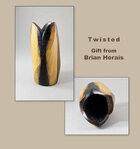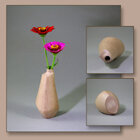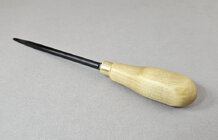How do yo turn a triangular salt and peppers with a spiral twist?
Ed
Ed
With great difficultyHow do yo turn a triangular salt and peppers with a spiral twist?
Ed
Definitely a good reference. His website seems to have disappeared -- he died several years ago. I hadn't thought to look on WOW.Brian Horais was good at it. His files on it are saved at the World of Woodturners. He had a good tutorial on it. I've done a few but it would be hard to explain all the details.
How do yo turn a triangular salt and peppers with a spiral twist?
Ed



Practice with a 3” diameter spindlesHow do yo turn a triangular salt and peppers with a spiral twist?
Today I found Brian Horais' handout from April 2016: off center turning, excellent. It's 6 pages of printed paper. I don't see a file on our club website.How do yo turn a triangular salt and peppers with a spiral twist?
Ed
Cindy Drozda has directions on her site for making triangle boxes.
She has a great set of directions on her site that people can print.I attended an IRD of hers on turning triangle boxes. She explained it all really well and made a tough project pretty easy. I did a demo for our club, but it was many months (maybe a year+) afterwards, so I needed to review parts of the process. They're really a lot of fun to do.
Dill's book is a great reference for multiaxis spindle turning, together with her articles in American Woodturner (available on the AAW website). On her website, her "new handout 2019" pdf is a beautiful visual summary of the fundamentals, better than in her book.I've known about it but just bought Barbara Dill's book "Multi-Axis Spindle Turning, came today.
Just browsing so far but what a WEALTH of information and ideas. She shows the method Brian H. and others use to make 3-sided spiral turnings plus much, much more.Multi-Axis Spindle Turning: A Systematic Exploration: Dill, Barbara: 9780764355349: Amazon.com: Books
Multi-Axis Spindle Turning: A Systematic Exploration [Dill, Barbara] on Amazon.com. *FREE* shipping on qualifying offers. Multi-Axis Spindle Turning: A Systematic Explorationwww.amazon.com
She also includes a Gallery at the end of the book with photos and descriptions of some incredible work by a dozen multi-axis artists. Quite an inspiration.
JKJ
